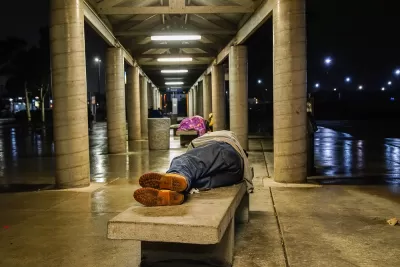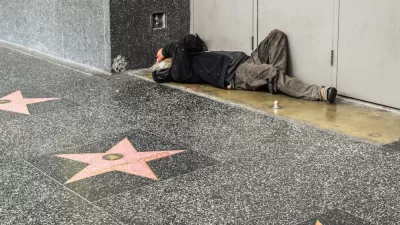Assessing the scale of homelessness in the United States is surprisingly difficult, with statistics failing to capture the diversity of unhoused people and their situations.

An exact figure for how many people are experiencing homelessness in the United States is hard to come by, writes the New York Times editorial board, making it difficult to define the scope of the problem and identify the areas of highest need. "The federal estimate relies on local one-night-only head counts of the homeless population, conducted at the end of January, that seem almost designed to produce an undercount." The current federal system, the authors argue, fails to collect accurate and uniform data. "In 2017, for example, the government put the total homeless population at 550,996. That same year, school districts across the country, using a broader definition, reported 1.35 million homeless students, according to the most recent data from the National Center for Education Statistics. That number, it bears emphasizing, is just a count of homeless students — not their parents or other family members, and not the rest of the homeless population." Such discrepancies point to deeply inaccurate methods and a lack of uniformity in homeless counts across the country.
Some localities, like California's rural Kern County, have adopted "a new, data-driven approach to making homelessness rare, brief and nonrecurring." According to the editorial, "it seems to be working." Earlier this year, Bakersfield announced it had effectively eliminated chronic homelessness in the city. Ending homelessness requires a variety of resources, but accurate information is an important first step, as "better data allows cities to make better use of existing resources."
FULL STORY: How Many Americans Are Homeless? No One Knows

Planetizen Federal Action Tracker
A weekly monitor of how Trump’s orders and actions are impacting planners and planning in America.

Restaurant Patios Were a Pandemic Win — Why Were They so Hard to Keep?
Social distancing requirements and changes in travel patterns prompted cities to pilot new uses for street and sidewalk space. Then it got complicated.

Maui's Vacation Rental Debate Turns Ugly
Verbal attacks, misinformation campaigns and fistfights plague a high-stakes debate to convert thousands of vacation rentals into long-term housing.

In California Battle of Housing vs. Environment, Housing Just Won
A new state law significantly limits the power of CEQA, an environmental review law that served as a powerful tool for blocking new development.

Boulder Eliminates Parking Minimums Citywide
Officials estimate the cost of building a single underground parking space at up to $100,000.

Orange County, Florida Adopts Largest US “Sprawl Repair” Code
The ‘Orange Code’ seeks to rectify decades of sprawl-inducing, car-oriented development.
Urban Design for Planners 1: Software Tools
This six-course series explores essential urban design concepts using open source software and equips planners with the tools they need to participate fully in the urban design process.
Planning for Universal Design
Learn the tools for implementing Universal Design in planning regulations.
Heyer Gruel & Associates PA
JM Goldson LLC
Custer County Colorado
City of Camden Redevelopment Agency
City of Astoria
Transportation Research & Education Center (TREC) at Portland State University
Jefferson Parish Government
Camden Redevelopment Agency
City of Claremont





























